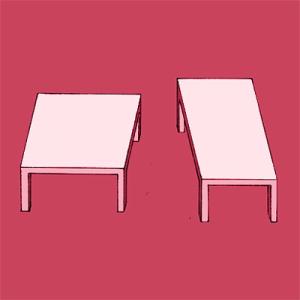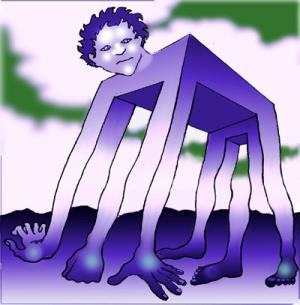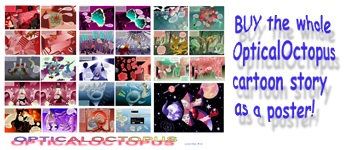Optical illusions in pictures, with notes on creating your own effects
Welcome To OpticalOctopus
A Comic Book story with visual illusions and commentary
Before we start, let's distinguish two kinds of visual illusion, those that are really illusory and those that present illusory realities.
This is really illusory!
These two white shapes are identical, except that the one on the right is rotated clockwise. But even if you've measured the sides to check, you won't be able to see the shapes with the proportions they really have, as flat shapes on your screen. Our brains assume that these are tables in three dimensions. We see them with the contrasting proportions that real table-tops would have to possess, in order to project these shapes in perspective. |
This shows illusory reality!
This character couldn't exist in the real world. It's not just that he has three arms and legs. In everyday vision, the edges of objects separate them from one another, like islands isolated in an ocean of space.In world of pictures, as the eye travels across the scene, the islands can transform into one another, or merge with the spaces around them, as the middle arm and leg of this figure do, flowing up into the sky. |
Most of the effects that follow are illusory realities. If you want to know more about them a good place to start is Roger Shepard's book Mind Sights, (W.H.Freeman, New York, 1990). For contemporary artists working with these perceptual effects see Al Seckel, Masters of Deception, (Sterling, New York, 2004).
There are two parts to OpticalOctopus:
A cartoon story
And a commentary with explanatory illustrations about the effects
Follow the cartoon story (referring to the commentary when you want to)
Read the commentary (calling up the puzzle pictures in the story when you want them)
The images on this site have been optimized for a screen resolution of 1024x768 pixels.

